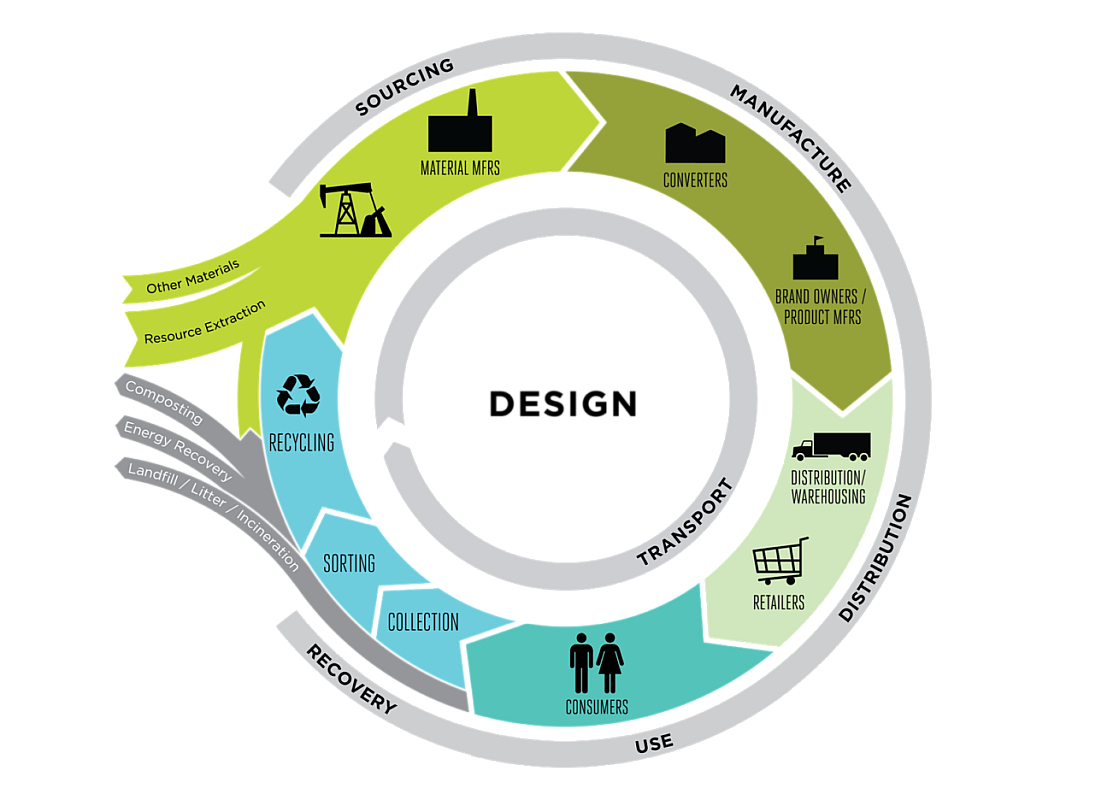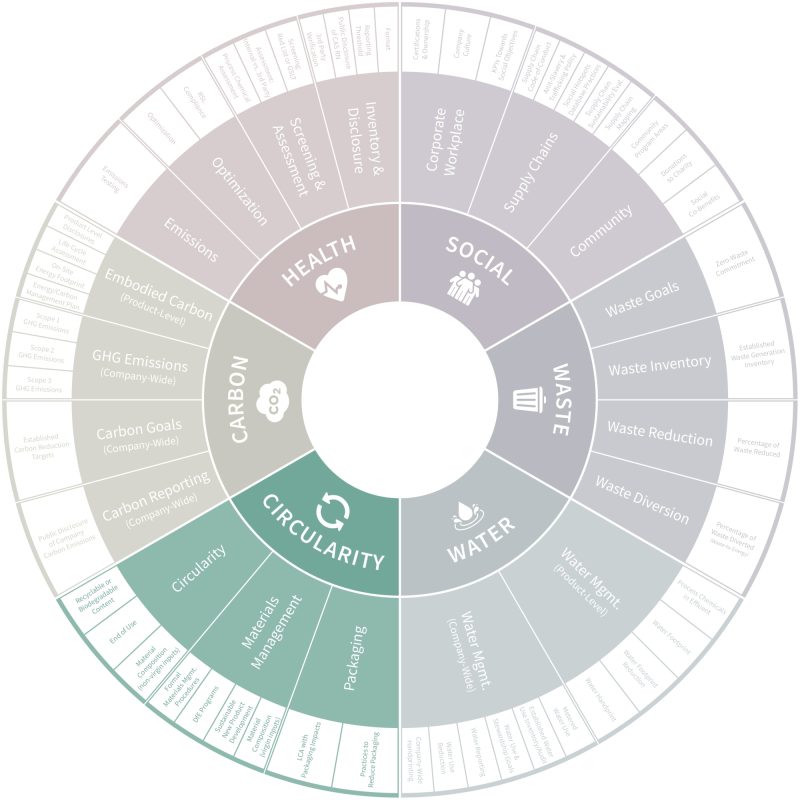CIRCULARITY
The current economic system that produces our materials, products, and buildings functions in a wasteful linear pathway that leads a product directly into a landfill rather than a cycle of thoughtful consumption that prevents excess waste. In this linear system, a product is designed and produced to serve a short life span and end up in our landfills and waterways- polluting our air, water, and food with micros plastics and waste.
A circular system allows the possibility to capture these resources and their economic value before they become waste. For manufacturers, this reduces costs, preserves lost materials, and addresses costly inefficiencies. Creating a circular system involves seeing the value in ‘waste’ and investing in each part of a material’s life cycle. This can also be done through exploring alternative materials, revamping existing infrastructure, and improving material management. Not only is corporate commitment key, but conscious design that understands and utilizes the full lifecycle of a material is crucial.

“Too often we see a product lifecycle unintentionally cut short and a resource become waste because the design of the project didn’t take into consideration the full cycle of opportunities for that material to be kept in circulation” Kate Daly
DESIGN STRATEGIES














KEY PRODUCT CONSIDERATIONS

Sourcing & Raw Materials
What is the product made of? Does sourcing this material have a positive impact on the circular economy, such as using recycled content or biobased materials that are grown from regenerative sources?
Utility (Use)
Is the product designed to last? Does it extend the average use phase to avoid needing replacement with new materials?
End of Life
What happens to the product at the end of its use? Is it made from content that is reusable, compostable, or recyclable? Is the product designed in a way that allows its components to be dismantled and utilized for such end-of-life intentions?
Materials Management
Is the manufacturer actively engaged in programs aimed at improving their use of materials and overall health and environmental impacts across their entire life cycles?
WORDS OF INSPIRATION
Watch as Kate Daly (Executive Director, Center for the Circular Economy at Closed Loop Partners) discusses her work with the circular economy at the 2019 Design Frontiers Symposium.
FURTHER READING

Also In This Series: SOCIAL EQUITY, WASTE, WATER, CARBON, HEALTH
The Urban Bio-loop
The Urban Bio-loop demonstrates that a different paradigm for materials in construction is possible.
Design for Product Lifetime
Quick Reference Guide by Autodesk Sustainability Workshop
Join Our Academic Network
Get Access to our carefully researched and curated academic resources, including model syllabi and webinars. An email from an academic institution or a .edu email address is required. If your academic institution does not use .edu email addresses but you would like to join the network, please contact healthymaterialslab@newschool.edu.
Already have an account? Log in